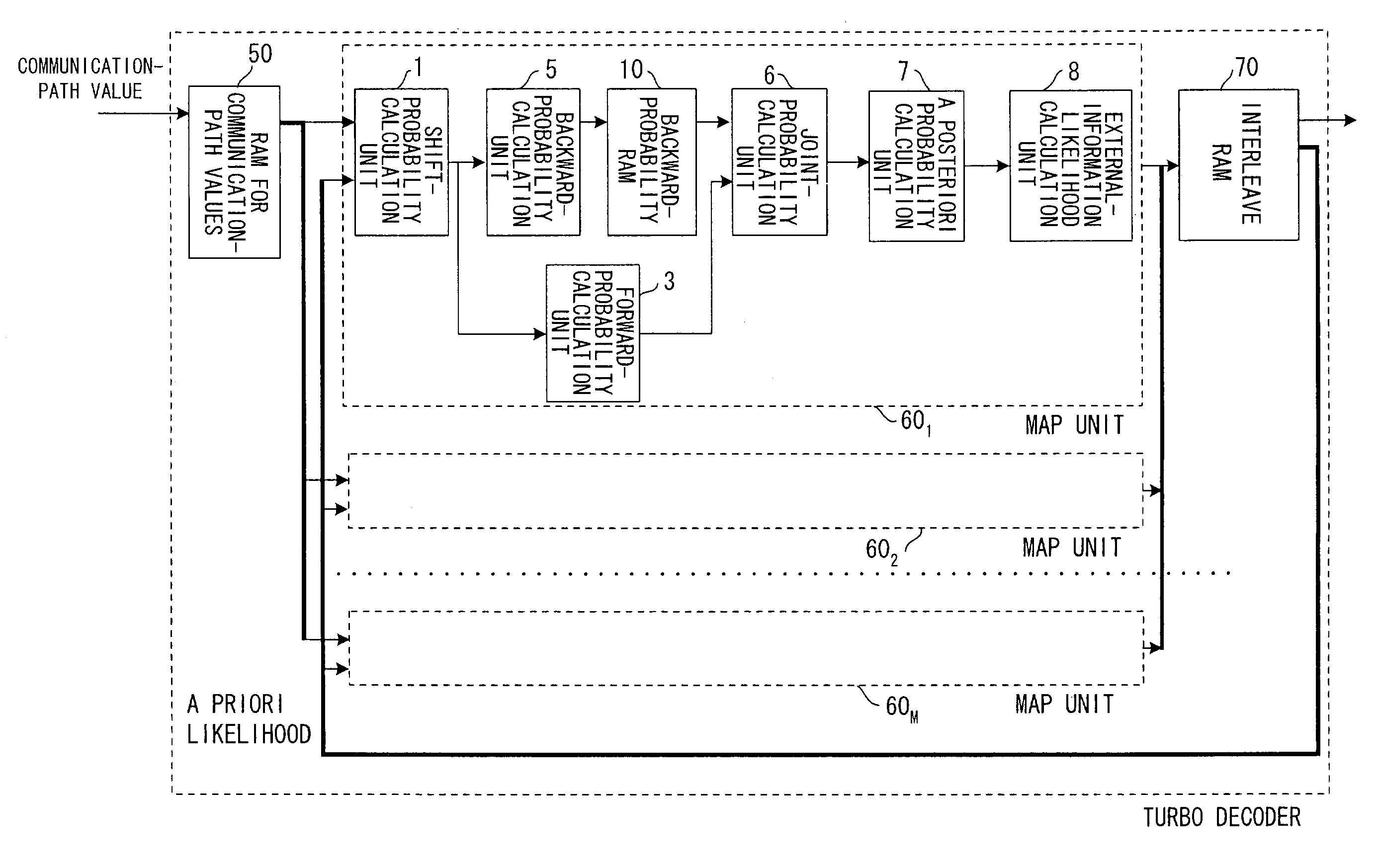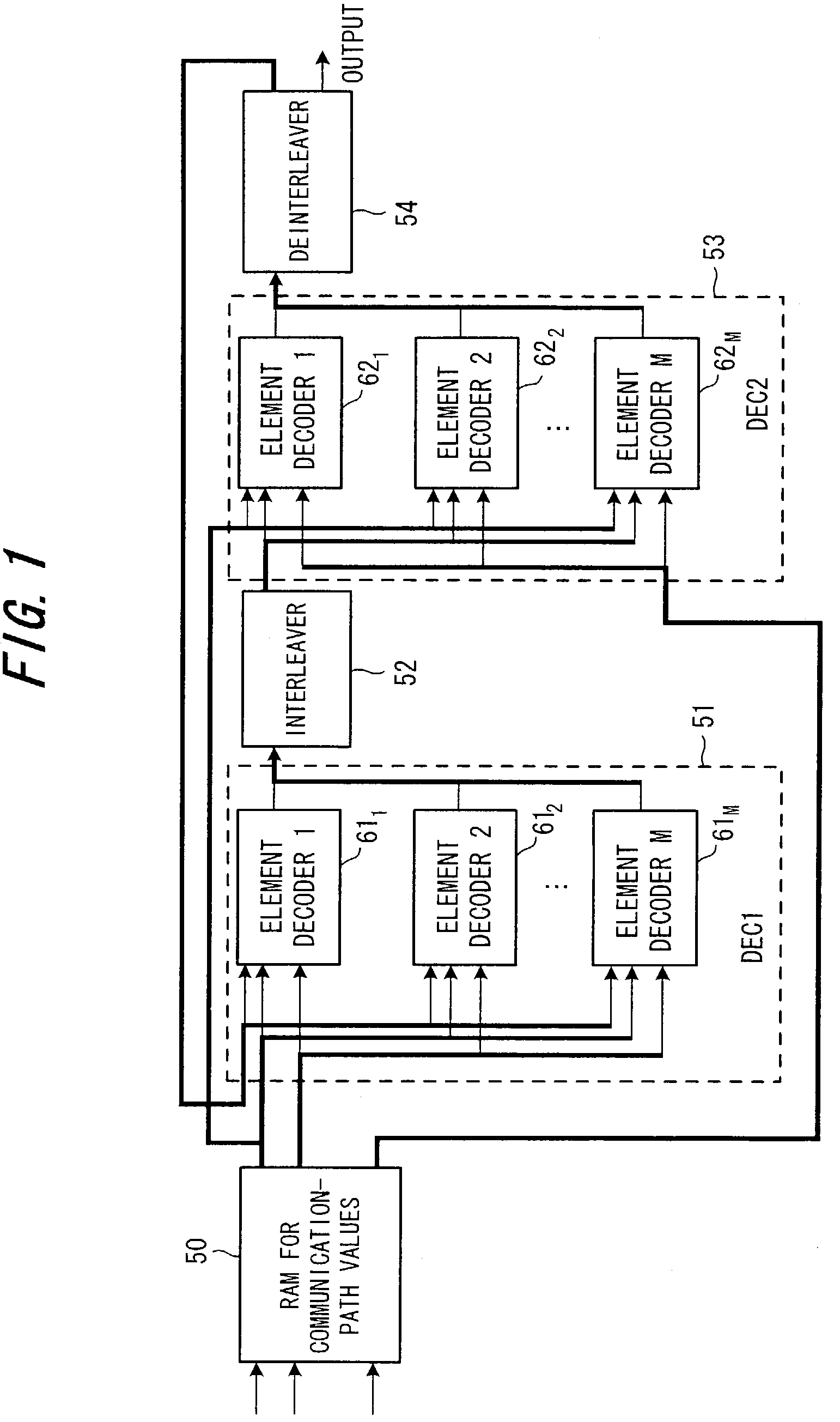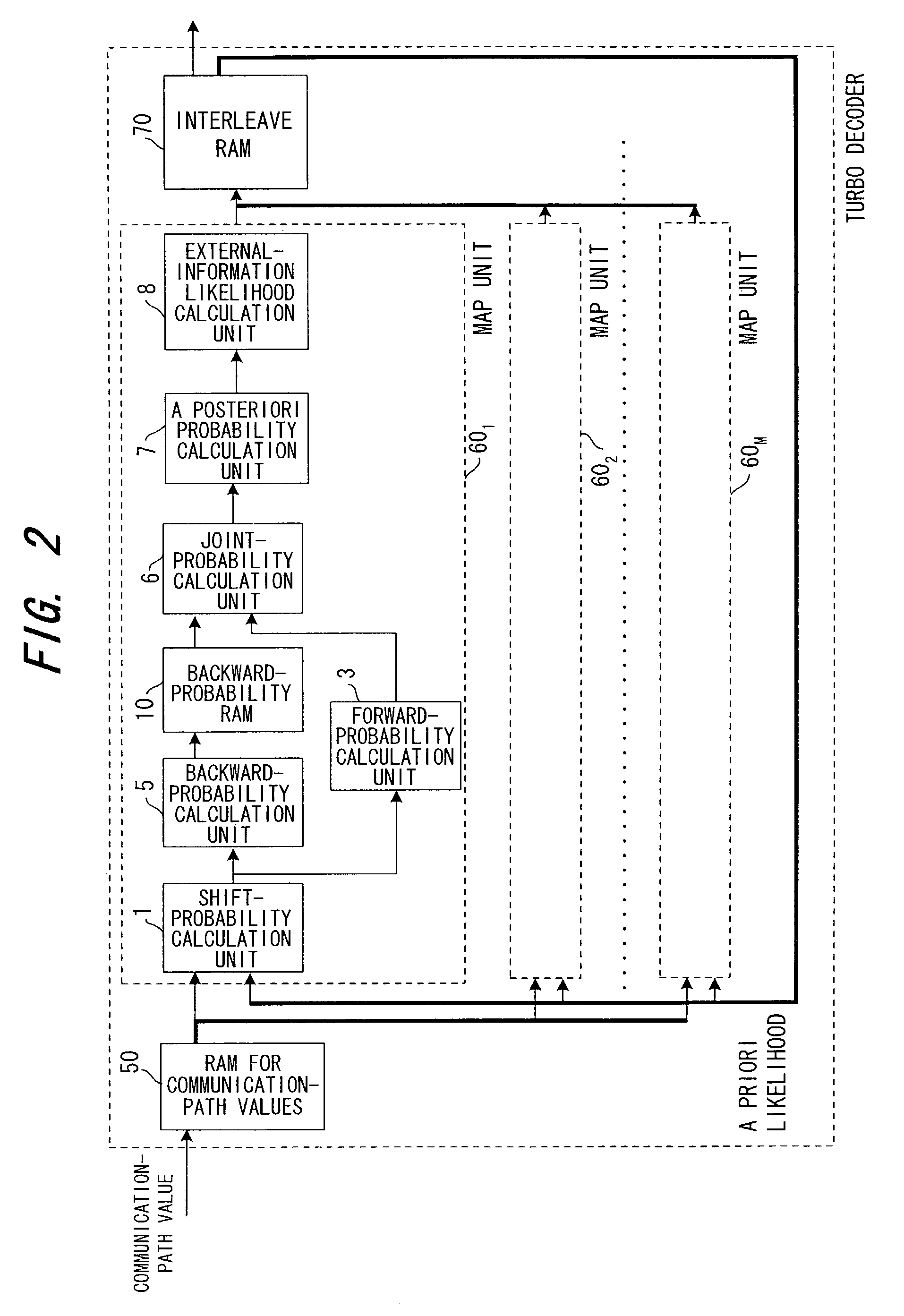Turbo decoding method and turbo decoding apparatus
a decoding method and turbo technology, applied in the direction of code conversion, code conversion, error correction/detection by combining multiple code structures, etc., can solve the problems of increasing delay time and insufficient shortening the time necessary for turbo decoding, so as to shorten the time necessary and shorten the delay time
- Summary
- Abstract
- Description
- Claims
- Application Information
AI Technical Summary
Benefits of technology
Problems solved by technology
Method used
Image
Examples
first embodiment
(B) First Embodiment
[0143]FIG. 2 is a block diagram of a first embodiment in which data division / simultaneous parallel decoding processing of the present invention is applied to a decoding apparatus (see FIG. 31) that adopts the conventional first MAP decoding method.
[0144]A MAP unit 601 is used alternately as the first and second element decoders 611, 621 in FIG. 1, namely as an element decoder for the first half of turbo decoding and an element decoder for the second half of turbo decoding, a MAP unit 602 is used alternately as the first and second element decoders 612, 622 in FIG. 1, . . . , and a MAP unit 60M is used alternately as the first and second element decoders 61M, 62M in FIG. 1. An interleave RAM 70 is used alternately as the interleaver 52 and deinterleaver 54 in FIG. 1. The MAP units 601 to 60M are identical in structure and have the shift-probability calculation unit 1, forward-probability calculation unit 3, backward-probability calculation unit 5, RAM 10 for backw...
second embodiment
(C) Second Embodiment
[0165]FIG. 6 is a block diagram of a second embodiment in which data division / simultaneous parallel decoding processing of the present invention is applied to a turbo decoding apparatus that adopts the conventional second MAP decoding method. This arrangement is substantially the same as that of the first embodiment shown in FIG. 2. The difference is that the backward-probability RAM 10 is provided with the continuous-β memory 10a1 and discrete-β memory 10a2.
[0166]FIGS. 7 to 9 are diagrams useful in describing the operation of the second embodiment, and FIG. 10 is a time chart for describing the operation of the second embodiment. In the second embodiment, let signal length obtained by adding tail bits onto information bits be N bits. The RAM 50 for communication-path values divides this signal length into M-number of segments and inputs the divided data to respective ones of the MAP units 601, 602, . . . 60M simultaneously. The MAP units 601, 602, . . . 60M res...
third embodiment
(C) Third Embodiment
[0187]FIG. 11 is a block diagram of a third embodiment in which data division / simultaneous parallel decoding processing of the present invention is applied to a turbo decoding apparatus that adopts the conventional second MAP decoding method. Components identical with those of the first embodiment shown in FIG. 2 are designated by like reference characters. This embodiment differs in that a shared backward-probability RAM 81 and shared forward-probability RAM 82 are provided, backward probabilities calculated from N−1 to 0 and forward probabilities calculated from 0 to N−1 are stored discretely in RAMs 81, 82, respectively, taking time N, and the MAP units 601 to 60M execute MAP decoding processing simultaneously utilizing these backward and forward probabilities.
[0188]FIG. 12 is a diagram useful in describing operation of the third embodiment. The first MAP unit 601 calculates forward probabilities initially from
[0189]N to 0 and stores them discretely in the sha...
PUM
 Login to View More
Login to View More Abstract
Description
Claims
Application Information
 Login to View More
Login to View More - R&D
- Intellectual Property
- Life Sciences
- Materials
- Tech Scout
- Unparalleled Data Quality
- Higher Quality Content
- 60% Fewer Hallucinations
Browse by: Latest US Patents, China's latest patents, Technical Efficacy Thesaurus, Application Domain, Technology Topic, Popular Technical Reports.
© 2025 PatSnap. All rights reserved.Legal|Privacy policy|Modern Slavery Act Transparency Statement|Sitemap|About US| Contact US: help@patsnap.com



